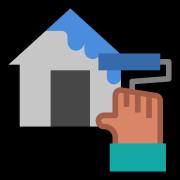Home Repair 101: Fix It Fast, Fix It Right
Home Repair 101: Fix It Fast, Fix It Right
Whether you're a seasoned DIYer or just dipping your toes into the world of home maintenance, mastering basic home repairs can save you time, money, and a whole lot of frustration. From leaky faucets to squeaky doors, here’s a guide to tackling common issues with confidence—and maybe even a little flair.
???? Essential Tools for Every Fix-It Mission
Before diving into repairs, make sure your toolkit is stocked with these must-haves:
• Hammer and screwdrivers (flathead & Phillips)
• Adjustable wrench and pliers
• Utility knife and putty knife
• Tape measure and level
• Drill with assorted bits
• Sandpaper and spackle
A compact tool kit box keeps everything organized and ready for action.
???? Common Repairs You Can Handle Yourself
1. Leaky Faucet
• Problem: Constant dripping wastes water and hikes your bill.
• Fix: Turn off the water supply, disassemble the faucet, replace worn washers or O-rings, and reassemble.
2. Patch Drywall Holes
• Problem: Dings from doorknobs or picture hooks.
• Fix: Apply spackle with a putty knife, let dry, sand smooth, and touch up with paint.
3. Squeaky Door Hinges
• Problem: That haunted-house creak.
• Fix: Apply a few drops of WD-40 or petroleum jelly to the hinge pins.
4. Smelly Dishwasher
• Problem: Funky odors from trapped food.
• Fix: Clean the filter, run a cycle with dishwasher cleaner, and wipe down the interior.
5. Loose Showerhead
• Problem: Wobbly or leaky fixture.
• Fix: Wrap threads with plumber’s tape and tighten. For extra grip, foam insulation can help stabilize it.
???? Clever Hacks for Everyday Fixes
Sometimes, the best solutions are surprisingly simple:
• Vegetable peeler as a screwdriver: In a pinch, it can turn flathead screws.
• Ice cubes for carpet dents: Let them melt over divots, then fluff with a spoon.
• Bar soap for sticky drawers: Rub along glides to smooth the slide.
???? Pro Tips for DIY Success
• Start small: Build confidence with easy wins.
• Watch tutorials: Visual guides can clarify tricky steps.
• Know your limits: Electrical and structural repairs may require a pro.
• Stay safe: Always turn off power or water before starting.
Home repair doesn’t have to be intimidating—it’s just another puzzle waiting to be solved. And with your knack for structured troubleshooting and creative thinking, Joe, you’re already halfway there.
Read more






